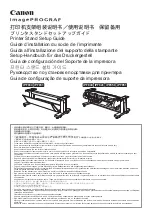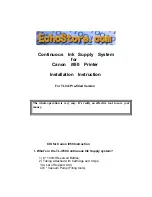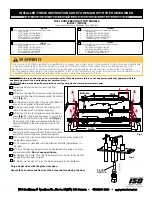
EN
SYMBOLS
Do not expose the battery to temperatures above 50 °C!
Prevent the battery from coming into contact with water!
Do not flush batteries down the toilet.
Do not throw batteries into a fire.
Follow the instructions provided in the instruction manual.
Do not throw batteries away with regular household waste. Turn all used batteries over to a
recycling centre for proper and ecological disposal. Please take care to protect the environment.
The product complies with valid European directives and assessment of conformity with these
directives has been carried out.
SAFETY INSTRUCTIONS FOR THE BATTERY AND CHARGER:
........................................... .................
- Carefully read this instruction manual before using the battery and charger.
1. Verify that the current and voltage supplied by your mains matches the specifications shown on the battery
charger.
2. Don’t allow moisture, rain or spraying water to come into contact with a charging battery.
3. Do not charge the battery at temperatures below 10 °C or above 40 °C. Charging the battery at extreme
temperatures may decrease its service life.
4. Treat any damaged battery that can no longer be charged as hazardous waste. Do not throw batteries away
as regular waste or dispose of in a fire or water.
5. Only use batteries and chargers approved by the manufacturer for use with the specific equipment.
6. Keep the charger clean and away from dust and other contaminants.
7. Always remove the battery before repairing the equipment.
8. Cover the contacts of the battery to prevent short circuiting.
9. Avoid the risk of explosion!
10. Do not smoke when the battery is charging or wherever batteries are stored. Explosive hydrogen gas may
leak from damaged batteries and may ignite if exposed to an open flame or spark.
11. In the event of fire, try and extinguish the fire.
12. The battery and charger will be slightly warm while charging.
Chemical hazards:
Do not open the battery case. Protect the battery from impact. Avoid contact with any electrolyte that leaks
from the battery. Immediately rinse the affected body part with water if such contact occurs. Immediately
seek medical attention if the electrolyte gets in your eyes.
Charging:
Connect the charger to 230 V mains and the charging cable to the charging module. Place the battery into
the charger insuring polarity (+ / -) is correct! The red indicator is on when the battery is charged. Important:
if the red indicator does not light up after a battery that was just used is inserted, disconnect the battery and
place it back in the charger after a few minutes. The typical charging time is 1 to 1.5 hours. The charger
ensures the battery is fully charged in this period. The battery has thermal overcharge protection and it may
remain in the charger for an extended period of time without damage (but no more than 24 hours). Heating

































